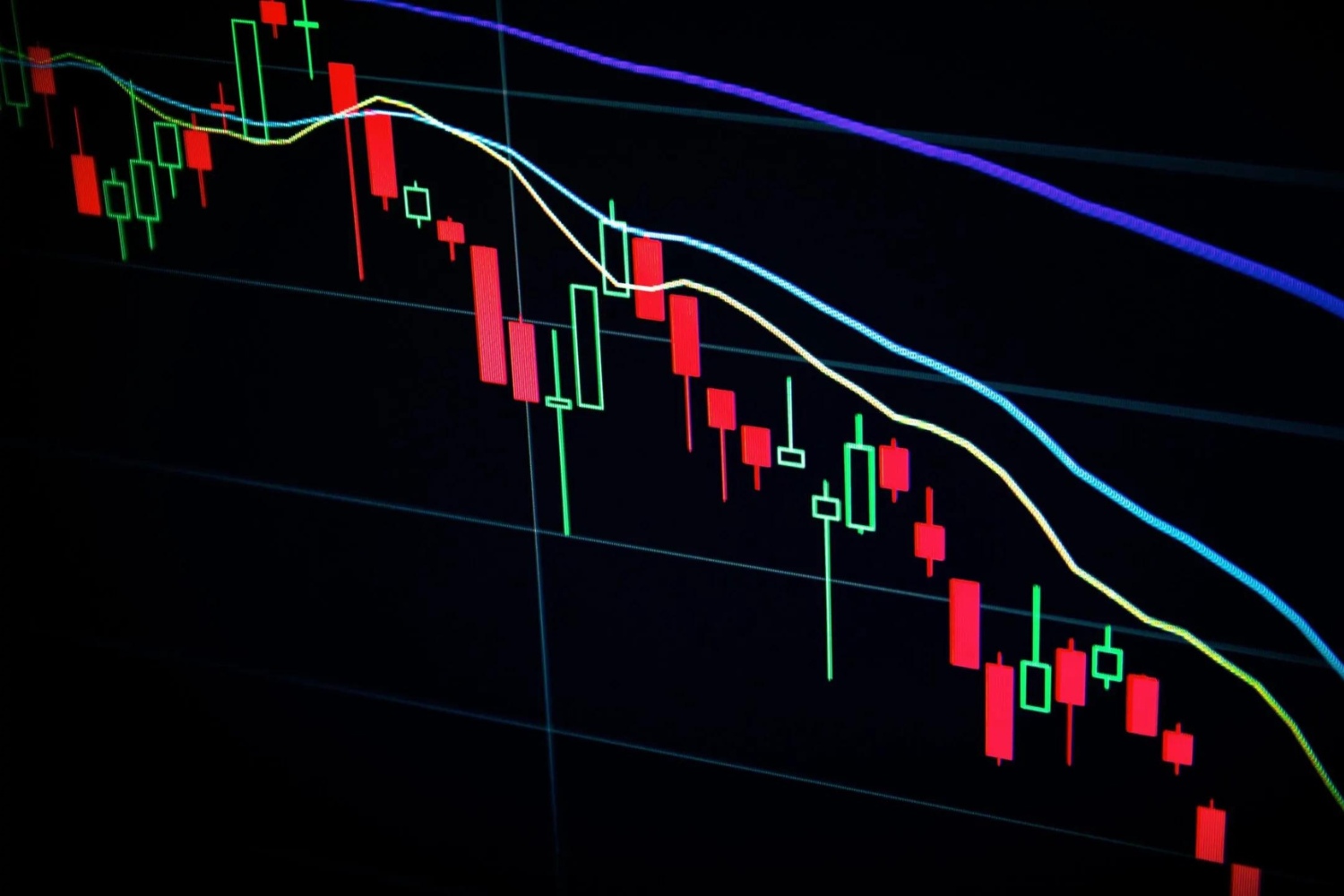Introduction
The cryptocurrency market has been experiencing significant turbulence in recent times, with the value of various digital currencies plummeting. This sharp and sudden downturn has left many investors and enthusiasts wondering: why is all crypto going down?
The volatility of the crypto market is not uncommon, as the value of digital currencies such as Bitcoin and Ethereum has always been subject to rapid price fluctuations. However, the recent downward trend has caught the attention of both seasoned traders and newcomers alike.
Understanding the factors behind the current crypto market decline is crucial for investors and those interested in the future of digital currencies. While no single reason can account for the entire market downturn, several key factors have played a role in driving down crypto prices.
In this article, we will delve into some of the main factors that have contributed to the current state of the cryptocurrency market. By examining these reasons, we can gain better insights into the trajectory of the market and make more informed decisions.
Market Volatility
One of the primary reasons behind the current decline in the cryptocurrency market is its inherent volatility. Cryptocurrencies have always been known for their price unpredictability, with sudden and significant price swings being a common occurrence.
The crypto market lacks the stability and regulatory oversight found in traditional financial markets, making it more susceptible to volatility. Unlike fiat currencies like the US dollar or Euro, cryptocurrencies are not backed by any physical assets or central authorities, which can lead to drastic price fluctuations.
Factors such as market speculation, investor sentiment, and global economic events can greatly influence cryptocurrency prices. News about regulatory actions, technological advancements, security breaches, or even celebrity endorsements can cause substantial price movements in the crypto market.
Moreover, the relatively small market capitalization of cryptocurrencies compared to traditional financial markets contributes to their higher volatility. With fewer market participants and a thinner order book, even minor buy or sell orders can have a significant impact on prices.
It’s important to note that volatility cuts both ways. While the recent downturn has been troubling for investors, it’s also worth noting that the crypto market has experienced notable bull runs in the past, with cryptocurrencies reaching all-time highs.
As cryptocurrencies continue to mature and gain broader acceptance, it is expected that their volatility will gradually decrease. However, in the short term, the fluctuation in prices remains a significant driver behind the current downtrend in the crypto market.
Regulatory Uncertainty
Another crucial factor impacting the cryptocurrency market is the ongoing regulatory uncertainty surrounding digital currencies. Governments and regulatory bodies worldwide are grappling with how to regulate this relatively new and rapidly evolving asset class.
The lack of clear regulatory guidelines has resulted in a patchwork of regulations across different countries, creating uncertainty and hesitation among investors. Some countries have embraced cryptocurrencies, providing favorable regulations and fostering innovation. However, others have taken a more cautious approach, imposing strict regulations or even outright bans.
The lack of regulatory clarity poses challenges for both cryptocurrency exchanges and individual investors. Exchanges must navigate complex compliance requirements and face the risk of sudden regulatory crackdowns or restrictions. Investors, on the other hand, may be reluctant to enter the market or increase their holdings due to concerns about potential legal and regulatory implications.
This uncertainty has a significant impact on market sentiment, contributing to the downward pressure on crypto prices. Investors prefer markets with clear rules and regulations as they provide a level of stability and confidence in their investment decisions.
However, it’s important to note that regulatory clarity is gradually emerging in some jurisdictions. Countries like the United States and Switzerland have taken steps to provide a more defined regulatory framework for cryptocurrencies, which could help alleviate some of the regulatory uncertainty in the future.
As the crypto market continues to gain mainstream acceptance, regulatory clarity will become increasingly important. A well-regulated environment can attract institutional investors and provide a foundation for wider adoption, potentially stabilizing the market and mitigating the effects of regulatory uncertainty.
Investor Sentiment
Investor sentiment plays a crucial role in shaping the direction of the cryptocurrency market. When investor confidence is high, prices tend to rise, whereas negative sentiment can lead to market downturns and sell-offs.
In the current crypto market downturn, investor sentiment has been heavily influenced by a combination of factors. The heightened market volatility and regulatory uncertainty we discussed earlier have contributed to a sense of caution among investors.
Additionally, negative media coverage and sensationalized stories highlighting the risks and potential scams associated with cryptocurrencies have further eroded investor confidence. Instances of hacking, fraud, and market manipulation have fueled skepticism and fear, leading some investors to exit the market.
The psychology of fear and greed also plays a significant role in shaping investor sentiment. During periods of market decline, fear tends to dominate, leading to panic selling and further driving down prices. On the other hand, during bullish periods, greed can fuel irrational exuberance and asset price bubbles.
It is crucial to consider that investor sentiment is subjective and influenced by individual perceptions and biases. In times of market decline, some investors may see it as an opportunity to buy at discounted prices, while others may choose to stay on the sidelines until the market stabilizes.
As the cryptocurrency market matures and regulatory frameworks become more defined, investor sentiment is likely to stabilize. Improvements in security measures, increased transparency, and widespread adoption of cryptocurrencies can restore investor confidence, ushering in a positive sentiment shift in the market.
Economic Factors
In addition to market volatility, regulatory uncertainty, and investor sentiment, economic factors also play a significant role in the current decline of the cryptocurrency market.
One such factor is the broader economic environment and macroeconomic trends. Cryptocurrencies are not immune to the effects of global economic conditions. Economic recessions, geopolitical tensions, and fluctuations in traditional financial markets can all impact the value of digital currencies.
During times of economic uncertainty, investors tend to shift their focus to more stable assets, such as gold or government bonds, rather than higher-risk investments like cryptocurrencies. This flight to safety can lead to a decrease in demand for cryptocurrencies, resulting in price declines.
Moreover, the overall liquidity in the financial system can also influence the cryptocurrency market. In times of liquidity crunches or financial crises, investors may need to liquidate their crypto holdings to meet obligations or cover losses in other areas, contributing to downward pressure on prices.
The availability and cost of capital also impact the crypto market. Cryptocurrency projects often rely on external funding through Initial Coin Offerings (ICOs) or venture capital. If there is a decrease in investor appetite or a tightening of funding sources, it can undermine the growth and development of the crypto ecosystem.
Furthermore, government policies and central bank interventions can indirectly influence the cryptocurrency market. Changes in monetary policy, interest rates, or regulations can have unintended consequences on the crypto market, causing fluctuations in prices.
It’s important to note that while economic factors can impact the short-term performance of cryptocurrencies, the long-term prospects of digital currencies are often driven by their unique technology and potential for widespread adoption.
As the global economy continues to recover and stabilize, and as cryptocurrencies gain broader acceptance and integration into traditional financial systems, the impact of economic factors on the crypto market may become less pronounced.
Bitcoin Dominance
One significant factor contributing to the decline of the cryptocurrency market is the dominance of Bitcoin. Bitcoin, as the oldest and most well-known cryptocurrency, has a considerable impact on the overall performance and sentiment of the market.
Bitcoin dominance refers to the market capitalization of Bitcoin compared to the total market capitalization of all cryptocurrencies combined. When Bitcoin dominance is high, it means that the majority of the market value is held by Bitcoin. Conversely, when Bitcoin dominance is low, it indicates a more diverse and evenly distributed market.
Currently, Bitcoin dominates the crypto market, with a high level of influence on other digital currencies. When Bitcoin experiences significant price movements, it often sets the tone for the rest of the market. If Bitcoin prices decline, it can lead to a cascading effect, causing other cryptocurrencies to also drop in value.
The high Bitcoin dominance is partially due to its status as a store of value and its widespread recognition as the “digital gold.” Many investors view Bitcoin as a safe haven asset during times of economic uncertainty and a hedge against inflation, leading to a preference for Bitcoin over other cryptocurrencies.
However, the dominance of Bitcoin also poses risks to the broader crypto market. The strong influence of Bitcoin can lead to a lack of diversification and innovation within the ecosystem. Other promising cryptocurrencies with unique features and use cases may struggle to gain attention and adoption if Bitcoin continues to dominate.
Furthermore, the dependence on Bitcoin as the price leader can exacerbate market volatility. Fluctuations in Bitcoin prices can amplify the volatility of the entire crypto market, making it more susceptible to market manipulations and rapid price swings.
As the crypto market continues to evolve, there is a growing need for diversification and decoupling from Bitcoin dominance. The emergence of alternative cryptocurrencies with strong fundamentals and innovative solutions can help provide greater stability and resilience to the overall market.
Trading Volume
The trading volume in the cryptocurrency market is another factor contributing to the current decline. Trading volume refers to the total number of coins or tokens being bought or sold on various exchanges.
High trading volume indicates robust market activity, providing liquidity and stability to the market. Conversely, low trading volume can amplify price swings and create a less stable trading environment.
During periods of market downturn, trading volume often decreases as investors become more cautious and hesitant to enter or exit positions. This reduction in trading activity can exacerbate the downward pressure on prices, as there are fewer buy orders to counterbalance sell orders.
Moreover, trading volume can be influenced by external factors such as regulatory actions or market sentiment. Negative news or regulatory crackdowns can lead to a significant decrease in trading volume as investors may withdraw from the market or reduce their trading activities.
Low trading volumes can also make the market more vulnerable to manipulation. With fewer participants and lower liquidity, it becomes easier for large traders or “whales” to manipulate prices by placing large buy or sell orders to create artificial price movements.
On the other hand, high trading volumes can indicate market excitement and increased demand. It suggests that there is more participation and interest from investors, creating a more vibrant and liquid market.
As the cryptocurrency market continues to mature, it is essential for exchanges and market participants to focus on improving trading volume and liquidity. Measures such as enhanced security, user-friendly interfaces, and a wider variety of trading pairs can attract more investors, effectively boosting trading volumes and fostering a healthier market ecosystem.
Market Manipulation
Market manipulation is a significant concern in the cryptocurrency market and can contribute to the decline in prices. Manipulation refers to illegal or unethical practices aimed at distorting the market for personal gain.
One common form of market manipulation is known as “pump and dump” schemes, where a group of individuals artificially inflate the price of a cryptocurrency through coordinated buying, creating a perceived sense of demand. Once the price has risen significantly, they sell their holdings, causing the price to crash and leaving unsuspecting investors with significant losses.
Another form of manipulation involves spreading false or misleading information about a cryptocurrency to manipulate market sentiment. This can include spreading rumors, false news articles, or utilizing social media platforms to create buzz around a particular coin for personal gain.
Additionally, the lack of regulatory oversight and transparency in the crypto market makes it susceptible to manipulation. With fewer safeguards in place, it becomes easier for manipulators to execute their strategies without facing adequate consequences.
Market manipulation not only undermines investor confidence but also distorts the true value of cryptocurrencies. It creates an environment of uncertainty and distrust, driving away potential new investors and stifling the growth of the market.
Efforts are being made to combat market manipulation in the crypto space. Regulatory bodies and exchanges are implementing stricter measures to detect and prevent manipulative activities. Increased transparency, regulatory compliance, and better market surveillance tools can help create a more transparent and secure trading environment.
As the cryptocurrency market continues to mature and regulatory frameworks become more defined, it is expected that the risk of market manipulation will decrease. Greater investor education, awareness, and due diligence can also act as deterrents to manipulative practices.
Overall, combating market manipulation is crucial for maintaining a fair, healthy, and sustainable crypto market that fosters trust, confidence, and long-term investment growth.
Technology Challenges
Technology challenges are another factor that can contribute to the decline of the cryptocurrency market. While blockchain technology has shown immense potential, it is not without its limitations and hurdles.
One of the significant challenges is scalability. Cryptocurrencies like Bitcoin and Ethereum face limitations in terms of transaction throughput and processing speed. As the popularity and usage of cryptocurrencies increase, the existing infrastructure can struggle to keep up with the growing demand, leading to slower transaction times and higher fees.
Moreover, security remains a critical concern in the cryptocurrency space. While the underlying blockchain technology is considered secure, there have been instances of hacks and security breaches on cryptocurrency exchanges and wallets. These incidents erode investor confidence and raise questions about the overall security of the ecosystem.
Interoperability is another technological challenge that hinders the growth and adoption of cryptocurrencies. Currently, there are numerous different blockchain platforms and protocols, making it difficult for them to communicate and interact with each other seamlessly. This lack of interoperability limits the potential for collaboration and integration of different blockchain projects.
Additionally, regulatory compliance and adherence to know-your-customer (KYC) and anti-money laundering (AML) regulations pose technical challenges for cryptocurrency exchanges and businesses. Implementing robust systems to comply with these regulations while maintaining user privacy and decentralization can be complex and costly.
Finally, user experience and accessibility are crucial factors in driving mass adoption of cryptocurrencies. Cryptocurrency wallets and user interfaces can be intimidating for newcomers, leading to a steep learning curve and potential usability issues. Improving the user experience and simplifying the onboarding process can help make cryptocurrencies more accessible to a broader audience.
Addressing these technology challenges requires ongoing research, development, and collaboration within the cryptocurrency community. Solutions such as layer two scaling solutions, improved security protocols, better interoperability standards, and user-friendly interfaces are being actively pursued to overcome these obstacles.
As technology advancements continue, it is expected that these challenges will gradually be overcome, leading to a more robust and mature cryptocurrency ecosystem that can withstand and thrive in the face of technological hurdles.
Conclusion
The decline of the cryptocurrency market is influenced by a combination of factors that contribute to its volatility and instability. Market volatility, regulatory uncertainty, investor sentiment, economic factors, Bitcoin dominance, trading volume, market manipulation, and technology challenges all play a significant role in shaping the current state of the crypto market.
The inherent volatility of the crypto market, driven by factors such as speculation and external events, leads to frequent price fluctuations. Additionally, regulatory uncertainty creates hesitancy among investors and can result in a lack of confidence in the market.
Investor sentiment is influenced by various factors, including media coverage, perceived risks, and psychological factors like fear and greed. Economic conditions, such as recessions or liquidity crunches, can also impact the crypto market as investors seek more stable assets.
Bitcoin dominance, coupled with the high level of market influence it holds, affects the overall performance and sentiment of the cryptocurrency market. The trading volume and liquidity of cryptocurrencies play a vital role in market stability and susceptibility to manipulation.
Market manipulation is a concern, as illegal or unethical practices can distort prices and erode investor confidence. Technological challenges, including scalability, security, interoperability, and user experience, can also impede the growth and adoption of cryptocurrencies.
While the current state of the cryptocurrency market may be challenging, it is essential to recognize that the market is still evolving. Continued regulatory developments, technological advancements, and improvements in market infrastructure are expected to shape a more stable and resilient market in the future.
As investors and enthusiasts navigate through the ups and downs of the cryptocurrency market, it is crucial to stay informed, analyze the various factors at play, and make well-informed investment decisions. By understanding the complexities and drivers behind the market dynamics, one can approach cryptocurrency investments with a balanced perspective and better adapt to the ever-changing landscape of the crypto market.

























